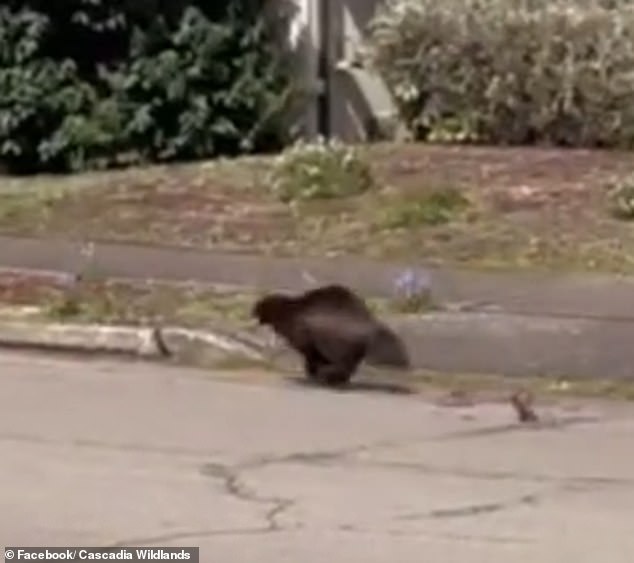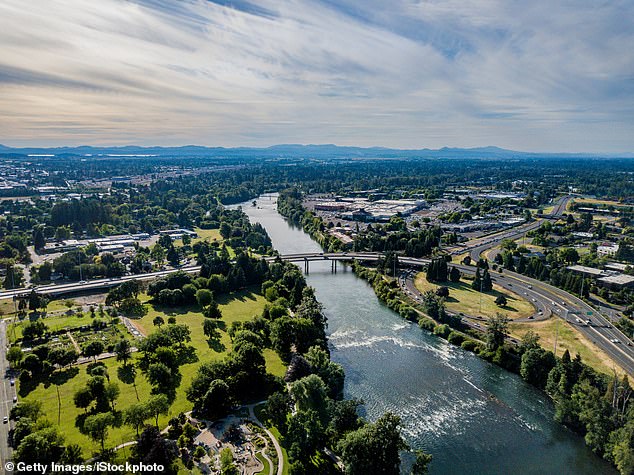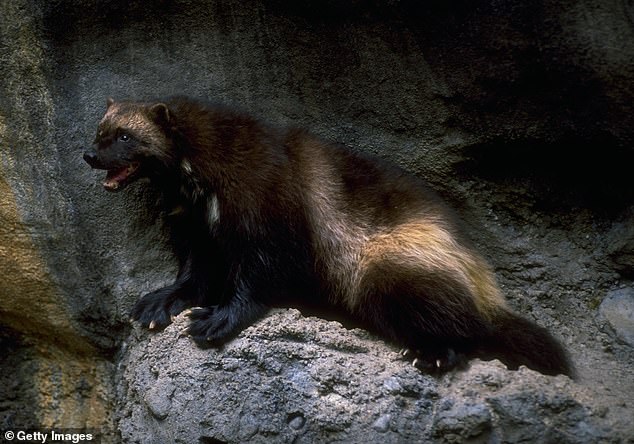Stunned Oregon resident films rare wild animal charging fast down street in broad daylight
Oregon residents were left stunned after spotting an incredibly rare wild animal sprinting down a suburban street.
Willie Gonia, 33, saw a flash of fur running across the road in his rural Eugene neighborhood in April and ran out of his house with a camera in hand.
At first he thought the animal was a bear, but was shocked to discover that it was actually a wolverine.
‘After a split second I knew it wasn’t a bear and realized it was a wolverine. I had never seen one in real life, only at nature shows,” Gonia said The Dodo.
Oregon residents were left stunned after spotting an incredible wolverine sprinting down a suburban street

Willie Gonia, 33, saw a flash of fur running across the road in his rural Eugene neighborhood in April and ran out of his house with a camera in hand
Known for its preference for winter climates, the National Animal Protection Foundation estimates there are fewer than 300 wolverines in the lower 48 states.
Most are found in Alaska, where there are expected to be about two wolverines per 1,000 square kilometers.
Nicknamed the ‘forest devil’, wolverines have a long and dense coat that is generally dark brown to black with a creamy white stripe running from each shoulder along the flanks to the base of the tail.
Like bears, wolverines or ‘gluttons’, they walk on the soles of their feet and have curved, semi-retractable claws that allow them to climb trees.

Pictured: Eugene, Oregon, where a wolverine was spotted walking down the street

Like bears, wolverines or ‘gluttons’, they walk on the soles of their feet and have curved, semi-retractable claws that allow them to climb trees
They are also well suited for traveling through deep snow, as they are most commonly found in Northern Canada, Russia, Siberia and the Scandinavian countries of Europe.
Known as the largest of the Mustelidae – a diverse family of carnivorous mammals – wolverines are primarily solitary creatures.
With a thick and stocky body and short legs, the wolverine often travels extensively in search of food – sometimes as much as 40 miles per day.
Because the skunk bear’s preferred environment is typically not very nutritious, the 50- to 90-pound animal has become opportunistic, eating whatever they can find or kill.
Male wolverines are larger than females, yet only 33 to 44 inches long, making the mammal an easy target for wolves, bears and mountain lions.

In the photo: Willie Gonia, who captured the wolverine on camera
Females make dens in deep snow, usually needing one and a half meters to protect her young from cold and predators. For this reason, the burrows are usually located high up at altitudes of 2,000 meters or more.
‘It’s extremely unusual to see [a] wolverine anywhere, let alone an urban or suburban environment,” Bethany Cotton, conservation director of Cascadia Wildlands, told The Dodo.
“It is extremely rare for anyone to be in a city, even for a few hours,” she added.
The animals are currently protected under the federal Endangered Species Act.
“Because of their need for late, deep spring snowpacks for shelter and nurturing, wolverines are particularly vulnerable to climate change and thus represent an early warning species for the severity of climate impacts,” Cotton said.
